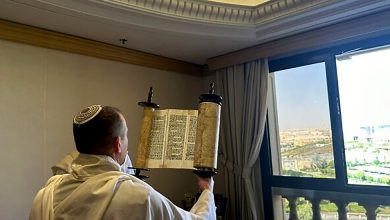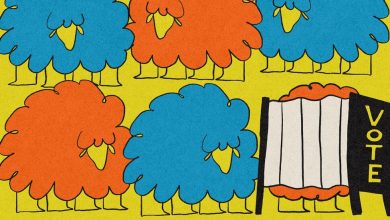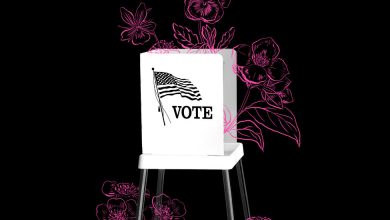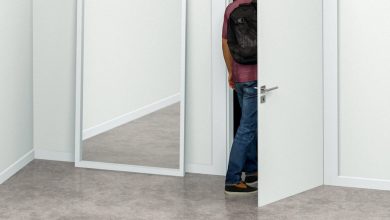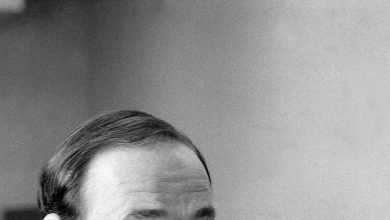Baudelaire Would Be Run Over in New York City Today
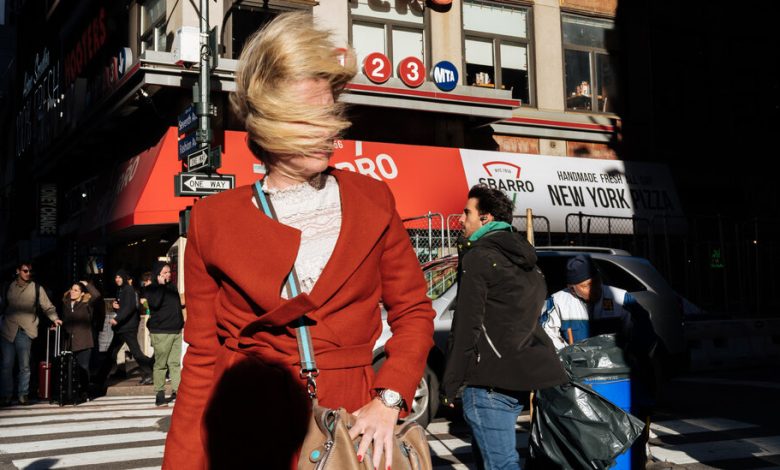
In his 1863 essay “The Painter of Modern Life,” Charles Baudelaire described the passionate city dweller as “a kaleidoscope gifted with consciousness.” In the French poet’s eyes, the city dweller had a unique opportunity to absorb and mirror the poetry of freely moving multitudes. For the committed flâneur, Baudelaire wrote, “the crowd is his element, as the air is that of birds and water of fishes.”
I felt this way in New York City 15, even five years ago. Sidewalks could be strolled contemplatively, providing one kept to their right-hand side, and roads could be crossed without much trepidation.
But I was hit by three bikes this past summer — two on sidewalks and all three after sunset — and only spared dozens more collisions because of my increasingly frantic footwork. In the years since the pandemic lockdown, drivers, with their ever-bigger vehicles, appear to have grown more aggressive. They seem less likely to yield to crossing pedestrians and more likely to stop, unperturbed, on crosswalks. Motorcyclists routinely whiz through red lights and tyrannize bike lanes. Bicyclists fly down avenues like arrows, bike lanes and one-way signs be damned, and a precious few of them halt for crossers. Electric delivery bikes chase poverty wages down our sidewalks, throwing the last sliver of pedestrian refuge into a novel sort of anarchy.
Weaving through throngs of inimitably colorful, diverse, bizarre New Yorkers once felt like performing “an intricate sidewalk ballet” — which is how Jane Jacobs, another famous literary flâneur, marvelously depicted the scene that was Greenwich Village’s Hudson Street in the 1950s.
Today, my inner flâneur has been replaced by a neurotic curmudgeon, the likes of which Fran Lebowitz personifies in the Netflix show “Pretend It’s a City.” Lebowitz disparages drivers who stop their vehicles on crosswalks and cyclists who pay no heed to their surroundings. “I am a person who believes, every day, I have a very high chance of being killed crossing the street,” she says in the show’s pilot episode, adding, luridly, “It’s an astonishment to me that every day tens of thousands of people aren’t slaughtered in the streets of New York.”
It is an astonishment to me, too.
While parts of the world have increasingly safeguarded their walkers, the United States has seen a sharp rise in pedestrian fatalities over the past few years. Deaths in New York City may not have climbed into the tens of thousands, but they remain much higher than we would like. In addition to bringing the obvious consequences of death, injury and the erosion of civic life, this citywide discord has taken a toll on emotional and philosophical life, too.
“Only ideas won by walking have any value,” Friedrich Nietzsche wrote in “Twilight of the Idols.” Nietzsche, like Schopenhauer and Kant before him, took daily strolls to unravel the day’s thought-puzzles and refine seeds into concepts. There are few more effective ways to think through a philosophical or personal problem than by taking a long walk. Something about the body having been set to a task (and assigned a route) allows the mind to whir into conversation — into the inner dialogue we call thinking.
But this is possible only as long as the flâneur’s peaceable, rhythmic perambulation remains relatively uninterrupted. My own hourslong strolls through New York City have been indispensable to my literary life — I cannot finish an essay if it hasn’t been aired out over 30 blocks.
The fruits of flânerie also extend to communion with the past and present. To wander through this city’s nexus of triumphs, failures and noble attempts is to find oneself awash in the accumulation of history. It is to commune with my idols past — writers, poets, philosophers — while marinating in the vivacity of my contemporaries. When I walk down Riverside Drive by 109th Street, I sometimes run my fingers along the red bricks of the prewar building in which Hannah Arendt lived. I feel cosmically proximate to her then, as I do elsewhere in the city with Edith Wharton, W.H. Auden, Mary McCarthy, James Baldwin, Susan Sontag, Truman Capote, Walt Whitman and Langston Hughes.
Without unstifled access to our city’s tree-lined streets and architectural marvels, New York’s amblers are left trapped in tiny apartments and cluttered offices. When we go outside, the domination of cars, scooters and bicycles imprison us in public. They trigger omnipresent skirmishes, dodges and clenches of the jaw. Today it too often feels as if crossing the street at a “Walk” light is not a right so much as a pleading negotiation — as if my free movement is begrudgingly, charitably permitted by glittery-eyed, two-ton monsters that inch impatiently forward, resentful to have relinquished precious seconds.
New York today feels a universe away from the city roamed by the writers I love. One might wonder what kind of literature they would make here now, in a city that seems to envelop us in restrictive, ambient anxiety rather than lyrical inspiration — and in ever more innovatively disruptive ways.
A city that no longer accommodates wandering no longer accommodates wondering, too, and a flâneur without freedom falls into a sort of zombified routine. I’ve started to limit my walks outside, and even quick trips to the grocery store, gym and local coffee shop can take the form of obstacle courses with hazardous stakes. Because free city walking has become so encumbered, so subordinate to wheeled expediency, I’ve found my thoughts more prone to distraction, tautology and the disorder of reflexive associations. Now I pace around my apartment in order to think through my essays, but dwindling are those unexpected connections between ideas — the rewards of spontaneous tangents jostled into discovery by discursive movement. My inner voice has quieted, my inner life dulled, all while, outside, the roar of engines and the clamor of disharmony are louder than ever.
Perhaps the most philosophically valuable aspect of flânerie is the degree to which it returns us to an analog habitat. If we’re collectively inclined to drown out our inner voices with TV shows, dating apps, online screeds and looping videos, a long walk outside doesn’t just serve to politely wrench us out of tiny rooms and away from tiny screens. It also allows the inner voice to emerge from slumber, to engage with itself, and thus, for the mind to find itself once again. Nietzsche glorified ideas “won by walking” precisely because they’re born of this redemptive self-consciousness.
In Baudelaire’s “A Lost Halo,” an angelic poet anxiously crosses a busy boulevard. He trips and falls, and his halo slips off his head and onto the muddy street. He leaves it behind, fearful of barreling horses and carriages, but he finds a silver lining in the forfeiture: “Now I can go about incognito,” he says, “do bad things, and indulge in vulgar behavior like ordinary mortals.” In this magical city, we surely cannot afford to relinquish individual responsibility, to give in to anarchy, to leave our halos in the mud. Our freedom, epiphanies and inner lives hang in the balance.
Shaan Sachdev is an essayist and cultural critic based in New York. He writes about philosophy, politics, city life, and his two favorite divas, Hannah Arendt and Beyoncé Knowles.
The Times is committed to publishing a diversity of letters to the editor. We’d like to hear what you think about this or any of our articles. Here are some tips. And here’s our email: [email protected].
Follow the New York Times Opinion section on Facebook, Instagram, TikTok, X and Threads.
